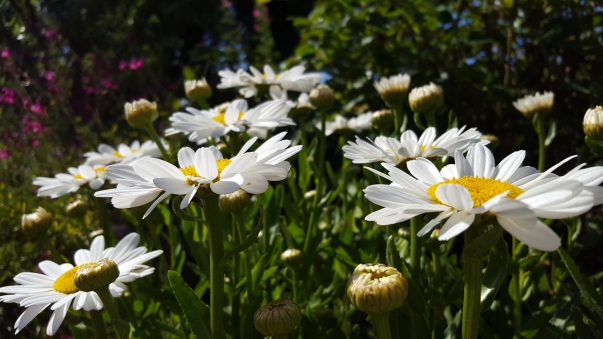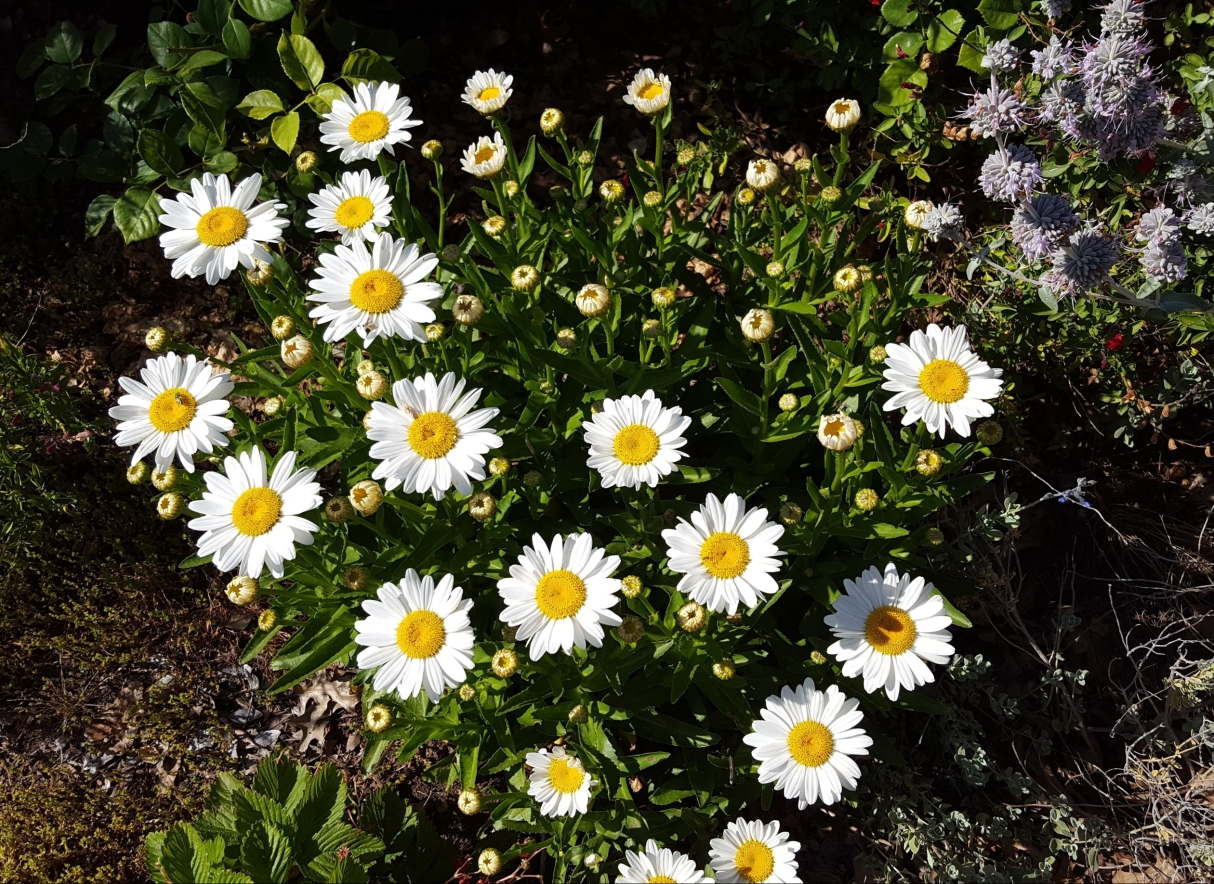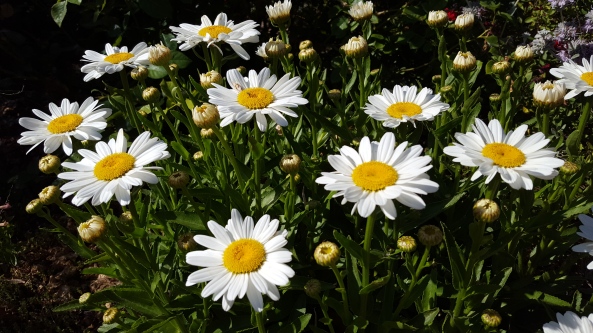I’m a big fan of having a colorful array of flowers in my yard blooming throughout the year. But without splashes of white to offset all that color, it just tends to run together. With satiny white petals, and bright and cheery yellow centers, the Shasta Daisy fills that roll of color balance very nicely!

Shasta Daisies are easy to grow and can take a beating in our hot summers and occasional cold spells during winter. They are drought tolerant, which is good for us here in the Central Valley, but still produce abundant flowers even with lower water amounts. This hybrid blooms throughout the summer, and will have some blooms even through winter in areas with mild weather. It does well in zones 5-9.
*A handy growing summary chart is at the end of the article.*
(All links open a new page, so you won’t lose your spot when you look around! Get information on gardening and cultural traditions, recipes, stories, and more!)
They seem to be resilient to many of the pests we deal with. In fact, I often find snails hiding amongst the leaves, but the plant doesn’t seem to get chewed on by them. They prefer sun, but can tolerate some shade. They have been growing in relatively heavy clay soil, but haven’t complained, though I’m sure they would be equally happy in better soil.
 The plants are perfect near the front of a flower border, reaching 2-3 feet, and will form a clump of about 2 feet wide. You can propagate the plant by dividing it. To divide it, take a shovel and push the blade down from above the plant just off of center. Cut the soil around that section of the plant with the shovel, going down about 1 foot. Lift up that section of the plant with the soil, and plant it where you want it to grow. Be sure to water it in thoroughly, and water regularly until established. Use just enough to keep the soil moist.
The plants are perfect near the front of a flower border, reaching 2-3 feet, and will form a clump of about 2 feet wide. You can propagate the plant by dividing it. To divide it, take a shovel and push the blade down from above the plant just off of center. Cut the soil around that section of the plant with the shovel, going down about 1 foot. Lift up that section of the plant with the soil, and plant it where you want it to grow. Be sure to water it in thoroughly, and water regularly until established. Use just enough to keep the soil moist.
The plants can also be started from seed, but keep in mind that they may not bloom that first year. Seeds can be purchased, or if you have an existing plant you can harvest the seeds from the spent heads as they will make quite a few. Regular potting soil can be used, or seeds can be directly sown in the garden. Sow in early spring after frost danger has past.
 The blooms make excellent cut flowers in arrangements. Their true white color is the perfect accent against colors like chartreus and pink. Blooms left on the plant should be cut as they fade to encourage more flowers to be produced. Cut them at the base of their stems, as once the flower dies or gets cut the stem will dry out and harden.
The blooms make excellent cut flowers in arrangements. Their true white color is the perfect accent against colors like chartreus and pink. Blooms left on the plant should be cut as they fade to encourage more flowers to be produced. Cut them at the base of their stems, as once the flower dies or gets cut the stem will dry out and harden.
Plant Summary:
- Perrenial
- Evergreen
- Height: up to 2-3 feet
- Width: up to 2 feet
- Sun: full sun to part shade
- Water: drought tolerant
- Soil pH: 6.5 – 7.5
- Soil type: tolerates a wide range of soils, but won’t do well in loose sand or overly wet clay
- Key nutrients: balanced
- Planting time: best to start in cool spring after freeze danger has passed


I love these. Easy to grow and great little infill plants.
LikeLiked by 1 person
Very true! A nice little bright spot, too.
LikeLike
Those are some very good pictures. I rarely seem the foliage look so good because most people do not cut them back enough over winter, or start plants fresh from division. The flowers rock!
LikeLiked by 1 person
Thanks! I haven’t needed to cut back leaves, just stems so far. I don’t think we get cold enough to need to. It’s a relatively new plant, but I may need to divide it in a year or so.
LikeLiked by 1 person
I don’t think that they need it, but they look better if cut back more than less (not the first year of course).
LikeLiked by 1 person